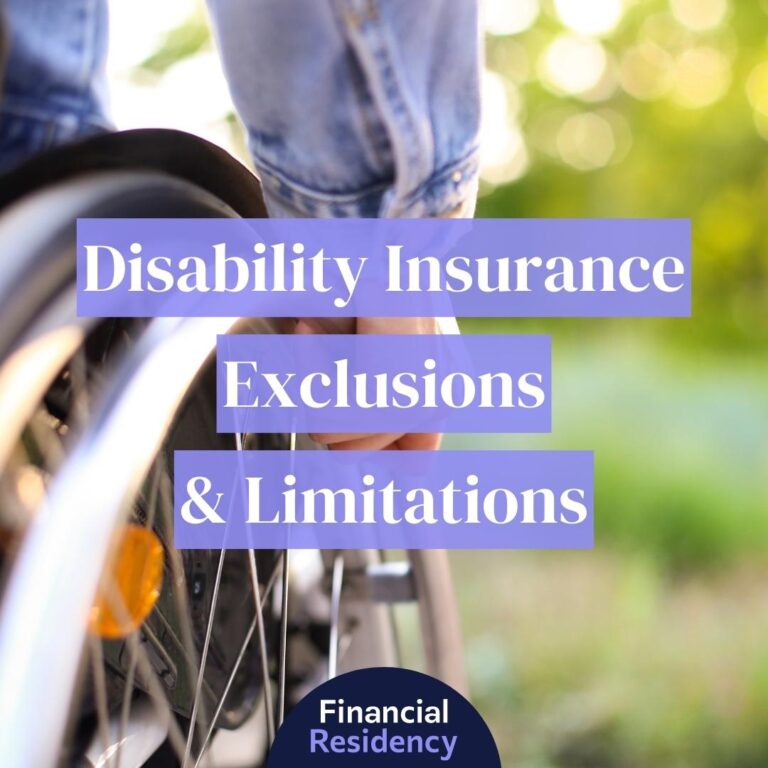According to the Center for Disease Control (CDC), 61 million Americans live with a disability that impacts major life activities. Disabilities can affect an individual’s physical, sensory, intellectual, and mental abilities and manifest in various ways. In fact, the same injury or illness can look different on everyone; no two people are the same.
Understanding the types of disabilities and how insurance companies look at them can help you know what your disability insurance may or may not cover. Read on to learn more about the four main subcategories of disability and some common examples of disabilities.
What Is A Disability?
The Americans with Disabilities Act legally defines a disability as a physical or mental impairment that substantially limits one or more major life activity. However, this definition doesn’t account for the complexity and diversity of disability.
Disabilities exist across a variety of circumstances. Disabilities can be visible or invisible. A person may be born with a disability or may experience a disability at some point in their life.
When we discuss disabilities, we have to remember that disabilities are complicated conditions that can include but are not limited to chronic illnesses, mobility hindrances, or mental health conditions.
Types Of Disabilities
We can group different disabilities into four broader categories:
1. Physical Disabilities
Physical disabilities affect a person’s mobility, stamina, or physical functioning. A physical disability may affect the functioning of one or more limbs, or it can affect the entire body. Many people assume that physical disabilities are visible, but many types of physical disabilities, such as epilepsy, are not apparent just by looking at someone.
Examples of Physical Disabilities
- Brain injuries: Also known as a TBI (traumatic brain injury), brain injuries are suffered by a sudden blow to the head that damages the brain. Suffering a brain injury can cause physical, cognitive, or neurological difficulties.
- Muscular dystrophy: Muscular dystrophy is a group of 30+ genetic diseases causing progressive weakness and degeneration of skeletal muscles used in voluntary movement.
- Multiple sclerosis: Multiple sclerosis is a disease in which the immune system attacks the protective covering of nerves resulting in disrupted communication between the brain and body. This disorder can cause pain, fatigue, impaired coordination, and even vision loss.
- Respiratory disorders: Respiratory disorders include asthma, cystic fibrosis, pulmonary hypertension, lung disease, and mesothelioma.
- Spinal cord injuries: Spinal cord injuries may happen due to a sudden blow or cut to the spinal cord. This may result in permanent loss of strength, sensation or function below the site of the injury.
2. Behavioral or Emotional Disabilities
Behavioral or emotional disabilities encompass a broad range of conditions that impact a person’s emotional well-being and mental functioning. These disorders carry a particularly pervasive cultural stigma and may prevent a person from maintaining relationships, navigating social interactions, or holding down a job.
Breaking the stigma surrounding behavioral and emotional disabilities is the first step to providing accessible care and support for individuals with these disabilities.
Examples of Behavioral or Emotional Disabilities
- ADHD: Short for attention deficit hyperactivity disorder, ADHD is one of the most common mental health disorders. It often appears in children and affects people well into adulthood. The most common symptoms of ADHD are having difficulty maintaining focus, displaying excessive movement that is unfitting for the setting, and acting with impulsivity.
- Anxiety disorders: Anxiety disorders, like generalized anxiety disorder or obsessive compulsive disorder (OCD), involve a person experiencing persistent feelings of dread or worry that interfere with everyday activities. These feelings may or may not be tied to stressful events and can persist for months or years.
- Bipolar disorder: Bipolar disorder is characterized by a person experiencing periods of depressive lows and manic highs. It is an especially serious mental disability that can interfere with a person’s ability to maintain normal energy levels, interest in activities, and the ability to think clearly.
- Depression: Also known as major depressive disorder, depression is a common and serious mental illness that causes loss of interest in activities, low energy, persistent feelings of hopelessness, and low self-esteem.
- Eating disorders: Eating disorders, such as anorexia nervosa or bulimia nervosa, are disabilities that cause severe and persistent disturbances in eating patterns that are associated with distressing thoughts and emotions.
- Personality disorders: A personality disorder is a mental disorder that is characterized by an unhealthy pattern of functioning, behaving, and thinking. Some common personality disorders include borderline personality disorder, narcissistic personality disorder, and histrionic personality disorder.
- Schizophrenia: Schizophrenia is a serious mental disorder that impacts a person’s ability to interpret reality in a normal way. They may experience delusions, visual and auditory hallucinations, and potentially harmful and disabling thoughts and behaviors.
3. Sensory Impaired Disabilities
Sensory disability involves impairments to one of the five senses: sight, hearing, touch, smell, or taste. If someone has a sensory disability, it means that they are unable to use one or more of their senses to a typical level. The most common types of sensory impairment disorders are deafness and blindness, but there are additional sensory impairments that people with disabilities may experience.
Examples of Sensory Impaired Disabilities
- Hearing impairment: People who are hard of hearing may or may not be deaf. Deafness is defined as a hearing impairment so severe that a child is impaired in processing linguistic information without amplification, sign language, or a hearing aid. Hearing loss or deafness may occur at birth or at a certain point in a person’s life.
- Olfactory and gustatory impairment: Olfactory (smell) and gustatory (taste) impairment are usually common as people age, but impairment of smell and taste can happen to people at any age for a variety of reasons. The most common olfactory/gustatory disabilities include dysosmia, hyposmia, phantosmia, and olfactory reference syndrome.
- Somatosensory impairment: Somatosensory impairment involves a person’s ability to feel and localize touch through the epidermis. If a person has a somatosensory disability, they may have difficulty feeling pain or perceiving temperature changes.
- Visual impairment: Vision impairment refers to vision loss through traumatic injury, disease, or degenerative or congenital disorders. Low vision or complete vision loss may require accessibility measures to ensure a person can live a safe, normal, and independent life.
4. Developmental Disabilities
Developmental and intellectual disabilities impact a person’s cognitive abilities and can lead to challenges with learning, problem solving, and interacting with others in social settings. These disabilities can create significant limitations for someone’s ability to live independently, and they may require additional assistance with tasks like feeding themselves, dressing themselves, or transporting to and from school or work.
Examples of Developmental Disabilities
- Autism spectrum disorder (ASD): Often referred to as autism, autism spectrum disorder is a neurological disorder that affects a person’s ability to communicate and behave. A person can be diagnosed as autistic at any age, but it is typically diagnosed in childhood.
- Cerebral palsy: Cerebral palsy is a group of disorders that appear in infants or children and permanently affect bodily movement and muscle coordination. It is caused by damage to or abnormalities in the developing brain.
- Down Syndrome: Down syndrome is a genetic disorder caused by a complete or partial copy of chromosome 21. While down syndrome occurs at the genetic level, it often presents developmental delays and physical disabilities throughout a person’s life.
Types of Disability Insurance
As you can see, a person can become disabled in many ways, and no one is exempt. Disability can occur from an illness, injury, or hereditary issue, so having the correct type of disability insurance is imperative.
Long-Term
Long-term disability insurance provides coverage for disabilities that last longer than one year. Benefit periods can be 2, 5, or 10 years; some policies go through to retirement. In addition, waiting periods can be 30 days to as long as one year.
Short-Term
Short-term disability insurance covers you during a disability for less than one year. It often covers a larger percentage of your wages lost because the coverage is shorter. Many employers offer short-term disability insurance as a part of their benefits.
Supplemental
Supplemental disability insurance covers the difference between your long-term disability insurance payout and your typical wages if you cannot work.
Group
An employer provides group disability insurance and covers all eligible employees. Your employer may cover the premiums or at least a portion of them. However, the coverage is usually much less than most people need, so a private policy is generally necessary.
How to Know Which Type of Disability Insurance Is Right For You?
To determine the type of disability insurance right for you, determine how you would function without your wages. Do you have enough money put away to cover a year’s worth of living or more?
If not, getting short and long-term disability is your best option. If your employer offers a group policy, consider supplementing it with a long-term private policy to ensure adequate coverage should you become completely disabled.
Learn more:



